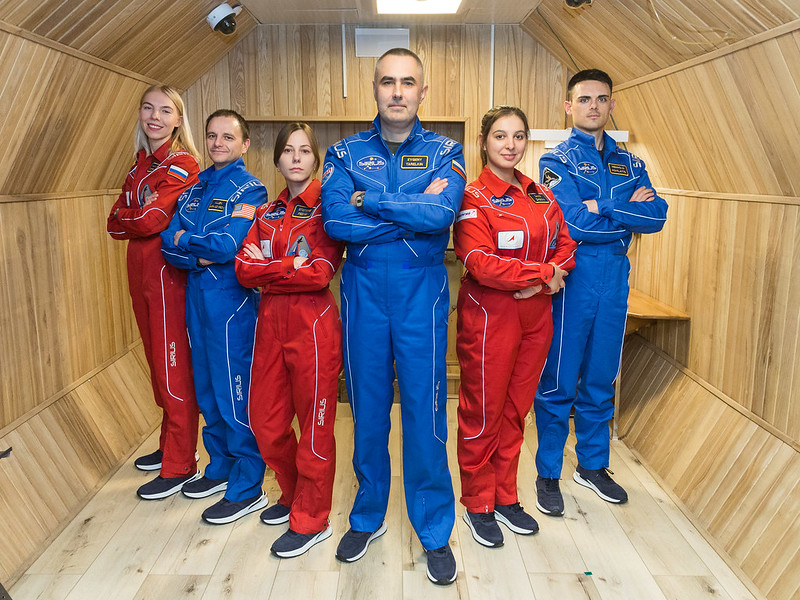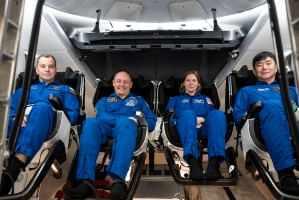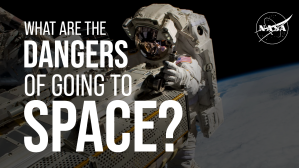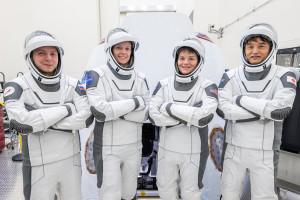- What is SIRIUS? Scientific International Research In a Unique terrestrial Station, or SIRIUS, is a series of international missions conducted in the ground-based analog facility known as NEK, short for Nezemnyy Eksperimental’nyy Kompleks, in Moscow, Russia. These missions allow researchers to focus on the effects of isolation and confinement on human psychology, physiology, and team dynamics to help prepare for long-duration space exploration. Two missions have been conducted so far: SIRIUS 17 (17 days of isolation) and SIRIUS 19 (four months of isolation). Recruitment is underway for crewmembers for the upcoming SIRIUS 21 mission (eight months of isolation). A one-year mission is planned for 2023 to 2024.
- What’s an analog and why do we use them? An analog is an environment on Earth that produces similar effects on the body to those experienced in space. These effects can be physical, psychological, and physiological. Analogs help NASA prepare for and understand the risks that astronauts will face during long-duration space exploration. Analogs are also test beds for new operational processes, countermeasures, and devices that may end up being flown in space.SIRIUS-19 crew members in Moscow, Russia. Behind them to the left is an entrance to the NEK facility.Credits: Oleg Voloshin (IBMP)
- What does the NEK look like?A guided virtual tour of the analog will be released in the coming weeks.
- How is NASA’s Human Research Program involved in this mission? The SIRIUS project is a bilateral partnership between NASA’s Human Research Program, or HRP, and the Institute of Biomedical Problems (IBMP) of the Russian Academy of Sciences. Each mission comprises a number of research studies designed by NASA HRP, IBMP, and other international organizations.
- What is the crew size in a SIRIUS mission? There are six international male and female crew members in each of the SIRIUS missions. Two crew members are selected from the United States by NASA. The other four crew members are selected by IBMP and may include other nationalities.
- How is the crew selected? Crews for the SIRIUS mission are selected from an international group of candidates. The individual crew member selection process is very similar to the astronaut selection process. SIRIUS crew members must meet a predetermined physical fitness level, educational background level, work experience, etc. Essentially, crew members are “astronaut-like” in qualifications.NASA selects two crew members to represent the United States in SIRIUS. The minimum requirements to apply for a U.S. position are that a person be:
- A U.S. citizen
- 30 to 55 years old (candidates aged 28 to 29 may be considered on a case-by-case basis)
- A professional with science, technology, engineering, or math-related education (minimum bachelor’s degree, advanced degree preferred) and experience, and/or two years of military experience (with military officer training preferred)
- Willing to be confined and isolated for 8 to 12 months
- Willing to spend 11 to 16 months in Moscow, Russia in a single trip. This time includes pre- and post-mission activities.
- Proficient in the Russian and English languages (subject to verification through an assessment test)
- Having a body mass index between 18.5 and 30
- A height not exceeding 6’ 1”
- A non-smoker
- Able to pass NASA Johnson Space Center physical and psychological assessments
- Are subjects compensated during the study? Yes. Subjects will be compensated as test subjects for time spent participating in all pre- and post-mission activities and all waking hours during the mission. Additionally, meals and incidental expenses will be covered on a per diem basis while in Moscow pre- and post-mission. Transportation and accommodations in Moscow will also be provided by NASA. Additional compensation information will be provided during the candidate screening process.Participation in this mission is not a NASA employment opportunity.
- What language(s) will be spoken during the mission? The primary mission language is Russian. Proficiency in both Russian and English is required for successful communication with other crew members and mission support personnel.
- Is NEK in outer space/orbit? No, NEK is ground-based and located on the campus of the Russian Academy of Sciences, Institute of Biomedical Problems in Moscow, Russia.
- Why not just do the research/studies in space? A ground analog allows access to more test subjects and generates more research data at a lower cost than space-based missions. Results from ground studies may be compared to similar studies that were conducted in flight.Study conditions also can be augmented more easily in an analog. For example, SIRIUS mission crew members are more isolated than crew members on the International Space Station. Crew members on the station can call their family, friends, doctors, and others at almost any given time with a very small delay in communication time. Crew members on SIRIUS will have a delay imposed upon their communications with the “ground,” which mimics a trip outside of low-Earth orbit. Through SIRIUS, other limitations on the availability of communication options and communication methods can also be tested.
- What type of research will be conducted in a SIRIUS mission? The NEK is an isolated, confined, and controlled analog allowing crew members to experience what an actual spaceflight environment feels like. Research conducted inside this facility yields important data on the physiological, social, and psychological effects of long-term isolation and confinement.Specifically, research during a SIRIUS mission supports investigations in immunology, physiology, psychology, microbiology, metabolic studies, and telemedicine. Risks studied in this mission include changes in cognitive and behavioral health, adverse team performance, and adverse physical health and performance. The studies also provide a way to assess the effectiveness of in-mission medical monitoring and diagnostics, and whether crew members have adequate food, potable water, and supplies.
- How is SIRIUS helping NASA get astronauts to Mars? These studies will help NASA develop criteria to select the best candidates for long-duration space exploration. By studying the effects of isolation on the human body and mind, NASA’s HRP can help build better countermeasures to minimize the potential negative health impacts.
- What does NASA hope to learn from the studies conducted during SIRIUS missions?The primary goals of HRP for the SIRIUS missions involve studying behavioral health and performance during long periods in an isolated and confined environment. We are looking specifically at how human psychology, physiology, and team dynamics change from prolonged exposure to confinement, sensory deprivation, monotony, and limited communication with the outside world. This will allow NASA to develop countermeasures that will support the men and women who navigate space on long-duration exploration missions.
- Will crew members be able to communicate with family or friends during the mission? During the entire isolation period, crew members will not have access to internet or phone communication with anyone outside the habitat. No real-time voice or chat-style communication will be available. Crew members can communicate with family and friends via email-style format. Written messages with any photo/video/audio attachments can be sent by crew members and their external contacts to the Psychological Support group, who will be relaying them to intended recipients once per day.
- How much free time will crew members have? Free time varies in terms of timing and duration but is generally limited to no more than one to two hours per day. More free time is typically available on weekends.
- What personal items can crew members bring on the mission? Due to habitat volume constraints, all personal belongings will be limited to fit approximately one carry-on-size bag per person. The contents cannot include any internet-enabled devices, food, or products that emit gas, among other restrictions.
- What do crew members do for hygiene? Toilets and sinks are available throughout the habitat. The use of shower is limited to approximately once per week. Wet wipes, similar to those used aboard the International Space Station, are available for daily hygiene needs, as well as rinseless shampoo. Basic toiletries will be provided. These include deodorant, shaving products, toothpaste, dental floss, feminine hygiene products, and other items.
- What about in-mission exercise? Several cardio and strength exercise devices will be used by all crew members on regular basis as part of the research and mission operations. All exercise routines will have prescribed frequency and intensity. Any voluntary exercise outside the prescribed routine will be limited.
- What will my in-mission role be? Any special training required? If selected, you will be a research subject, not an investigator. All pertinent training and instructions will be provided to you before or during the mission.
- What kind of food is provided during the mission? All food will be shelf-stable, non-perishable, and will include all essential components of a well-balanced diet. The menu will be set and quantities will be calculated pre-mission to meet individual caloric intake requirements. In general, three meals with small snacks will be available daily. Special dietary needs cannot be accommodated.
SIRIUS-19 crew members in Moscow, Russia. Behind them to the left is an entrance to the NEK facility.




































